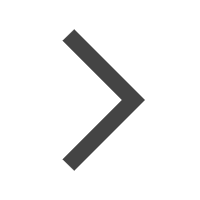1、What is DC Motor?
A DC motor is any type of rotating motor that converts direct current energy into mechanical energy. The most common type relies on the force generated by a magnetic field. Almost all types of DC motors have some internal mechanism, either electromechanical or electronic, to periodically change the direction of the current in parts of the motor. Many applications that require control of speed or torque use DC motors because the control system of DC motors is easier to implement than AC motors
2、Different Parts of DC motor
Rotor (Rotating part:armature winding)
The rotor of a DC motor is a cylinder composed of mutually insulated magnetic sheets. The rotor is perpendicular to the axis of the cylinder and is a rotating part that rotates on its axis and is separated from the field coil by an air gap.
Stator (Static part:Permanent magnet)
The stator of a DC motor is a non-moving part on which a magnetic field is wound to produce a magnetic field. This electromagnet has a cylindrical cavity between its two poles.
Commutator
The commutator of a DC motor is a cylindrical structure consisting of copper segments stacked on top of each other but insulated from each other with mica. The main function of the commutator is to supply current to the armature winding.
Brushes
The brushes of a DC motor are made of graphite and carbon structures. These brushes conduct the current from the external circuit to the rotating commutator.
3、HOW A DC MOTOR WORKS
When a DC supply is connected the armature winding, an electric current sets up in the armature conductors which experience a force due to the magnetic field. One side of armature conductor under North-pole carries current in one direction whereas the other side under South-pole carries current in the opposite direction and hence force on each side will act opposite to each other. Therefore, if one side of the armature moves in upward direction, the other side will move in the downward direction which results in a driving torque rotating the armature in clockwise direction. When the conductor moves from one side of a brush to the other, the current in that conductor is reversed. At the same time, it comes under the influence of the next pole which is of opposite polarity. Consequently, the direction of the force on the conductor remains unchanged. It should be noted that the commutator reverses the current in each conductor as it passes from one pole to another which helps to develop a continuous and unidirectional torque in order to keep rotating the rotor. Otherwise, the direction of the force would have reversed every time when the conductor comes under the influence of opposite magnetic pole.
When the armature of a DC motor rotates, the conductors also cut the magnetic flux lines and hence an emf induces in the armature winding according to the Faraday’s law of electromagnetic induction. The direction of this induced emf is such that it opposes the armature current and hence called back-emf.
4、Two types of DC motors (DC motors)
Comparison of Brushed DC motor and brushless DC (BLDC) motor





















